This outlet so frequently encourages Georgetown students to “Read the Paper.” It should also encourage students to “Read the Campus Plan,” a document that Georgetown submits to the Washington, D.C. government outlining the university’s multi-year strategic plan. Included in this document are enrollment caps, the authorization for SNAPS and, perhaps most significantly, plans for undergraduate housing.
Buried within the most recent campus plan — submitted in 2016 and set to last until 2036 — is an admission that the university will “provide special emphasis on renovating current on-campus housing, with a focus on senior and junior living communities such as Henle Village, Village A, and Alumni Square.” In this case, renovation may be a sort of euphemism; though originally marked for “renovation,” Henle Village was completely torn down and reconceived. The wrecking ball could soon meet Vil A and Alumni Square. Indeed, the Georgetown University Student Association (GUSA) has just received confirmation from administration that the planning stage of Vil A’s redevelopment, though the details are unclear to what extent Vil A will be remodeled, has begun.
The university’s desire to tear down Vil A is fair. Its roofs have long been rumored to be caving in. Its laundry room is a disaster, and its facilities seem pale and crumbling compared to the newly opened Byrnes and Hayden Halls. But what should replace it?
While the university has not issued any plans that confirm what the renovation would entail, whether that be as small as remodeling specific bathrooms or as grand as a formal restructuring, I remain concerned that we would lose what Vil A means to the student body. When I say “Save Vil A,” I don’t mean the physical structure itself. “Save Vil A” is a call to preserve everything the complex represents: the community, the view, the revelry, the ecstasy. Specifically, if the university replaces Vil A, the new building must have similar, commonly accessible, rooftops.
While nothing has been confirmed yet, there are some worrying signs from past administrative action that this may not happen. The university has been engaged in a protracted and intentional crackdown on Georgetown’s social culture. First, the administration severely curtailed access to the Vil A rooftops prior to Georgetown Day in April, despite the huge efforts of student advocacy and the current GUSA executive to keep the space open. While safety is always a reasonable concern, Vil A was previously the primary community gathering location on Georgetown Day; this change has since driven hundreds of people off campus.
Second, the university has recently begun training resident assistants (RA) to shut down parties in Vil A immediately without issuing any warning. Although the penalties for party-related noise violations have decreased, the shift from RAs acting as peers who could issue warnings to strict enforcers of rules reflects a worrying bureaucratization of a fundamentally social process. This, coupled with a rumored increase in enforcement of underage drinking policies in the Vil A community itself, creates a troubling picture of an administration willing to curtail fun in the name of risk reduction.
But what would we, as the Georgetown community, lose if the university replaced Vil A with a Henle Village-style building without commonly accessible rooftops? Besides robbing the Blue and Gray Society of one of its best tour locations, Hoyas would also lose the last true common social area we all share. As a first-year, you can just go to Vil A on any weekend and see what is happening. McDonough School of Business students can meet pre-medical students, future security studies majors can meet nursing students — and so on and so forth. Vil A, unlike the closed-off gatherings hosted in townhouses and Alumni Square residences, does not discriminate. It is our last on-campus place where all Georgetown students can just be, free from the self-selection of club parties and friend groups.
Unity. Togetherness. That is what we stand to lose if we lose the rooftops. So, to the administration: You owe it to your students to construct similar social areas on the new complex’s rooftops. With the recent crackdown on our social life, that is the bare minimum. And to the student body: Do not have the wool pulled over your eyes. Henle was demolished and rebuilt in two short years with the blueprints likely approved years before that. If construction begins and the new Vil A plans don’t include rooftops, we have already lost.
The planning stage of Vil A’s redevelopment has begun. It is of the utmost importance that a student voice is included on the design committee so facilities and planning understands this perspective from the beginning. If that committee, however, still pushes ahead without including rooftops in the new design, we must be ready for further, more forceful advocacy.
Every Hoya should stay aware of this issue and draw the same red line: no new Vil A without the same common roof spaces Georgetown students have enjoyed since 1979. We’ve had almost 50 years of fun up there. Here’s to ensuring 50 more.
Saahil Rao is a junior in the School of Foreign Service. This is the eleventh installment of his column “Institutions and Their Ills” and the second of the Fall 2025 semester.
This article has been updated to clarify the university’s plans for Village A.


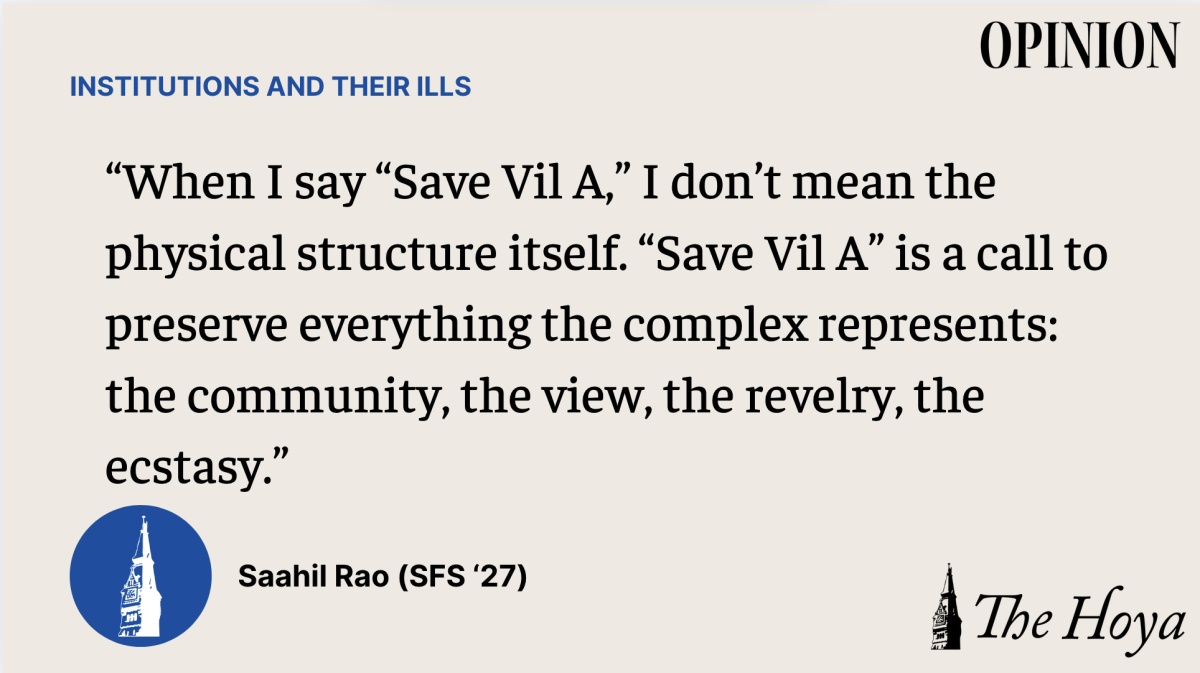
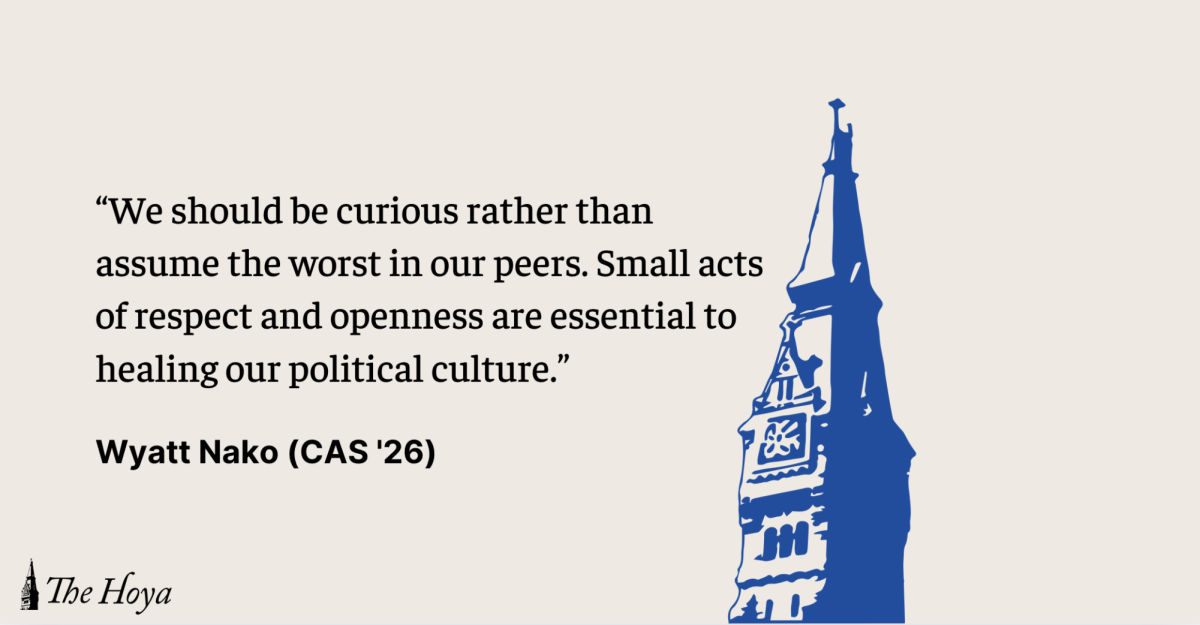
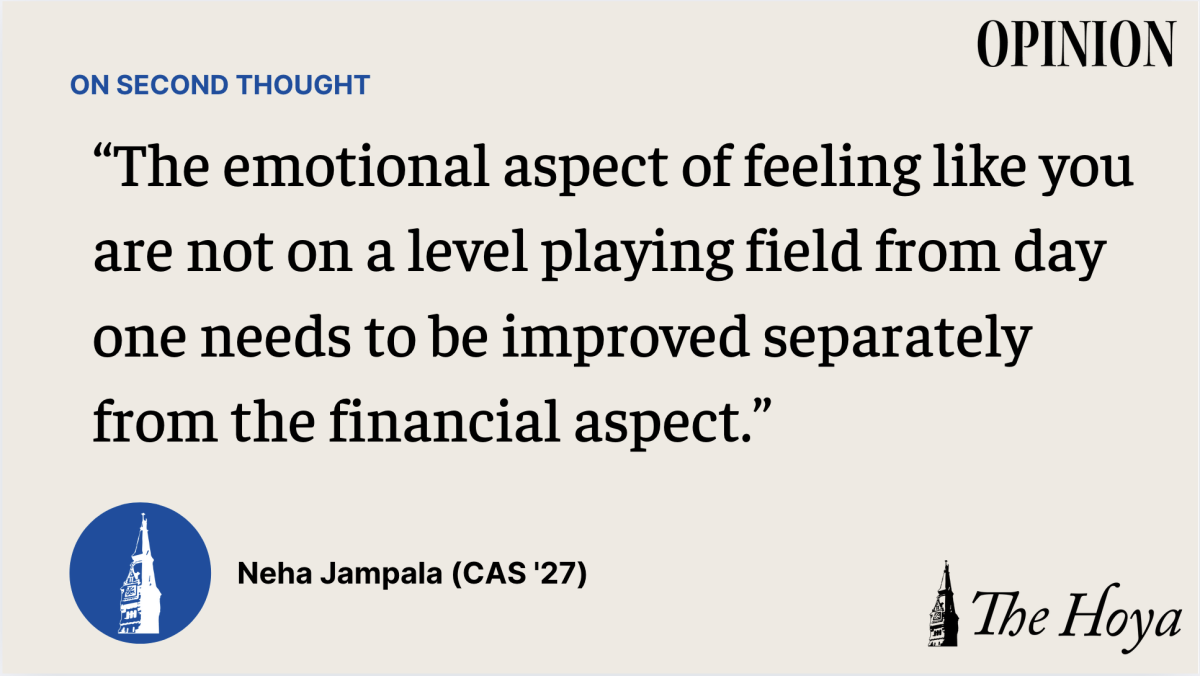
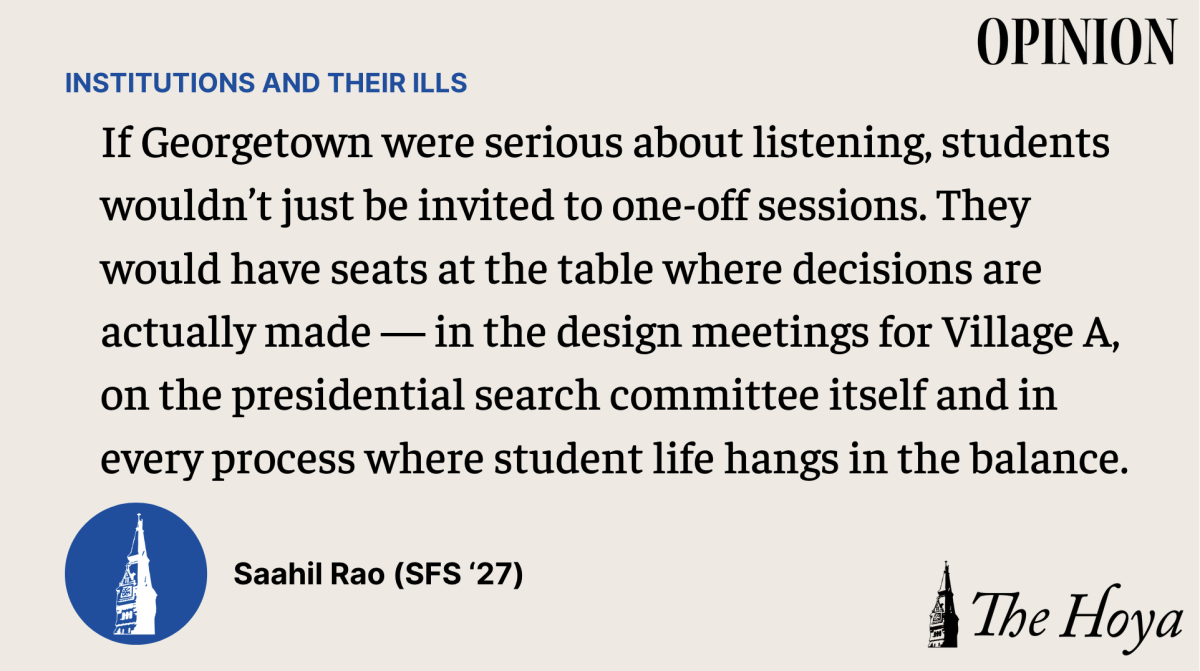
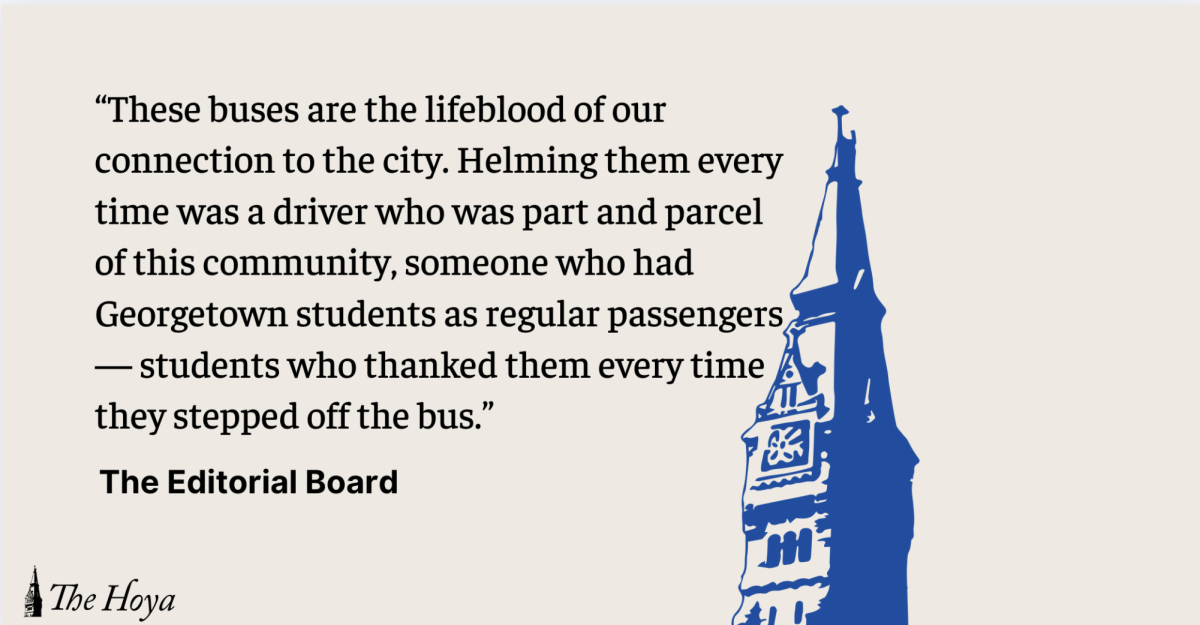
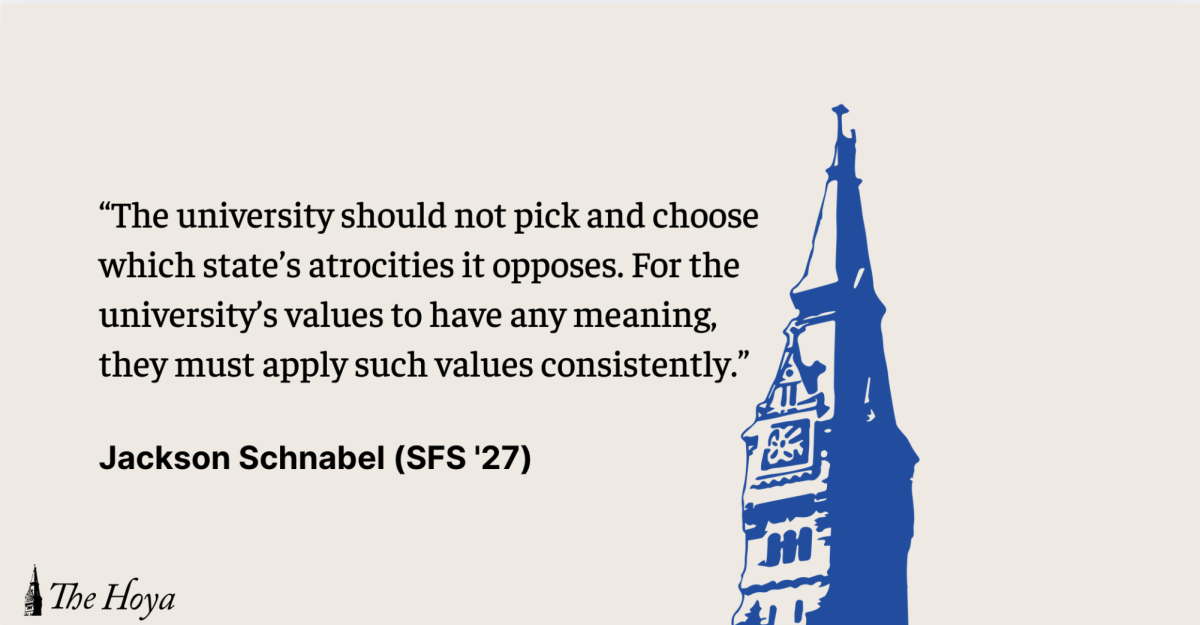
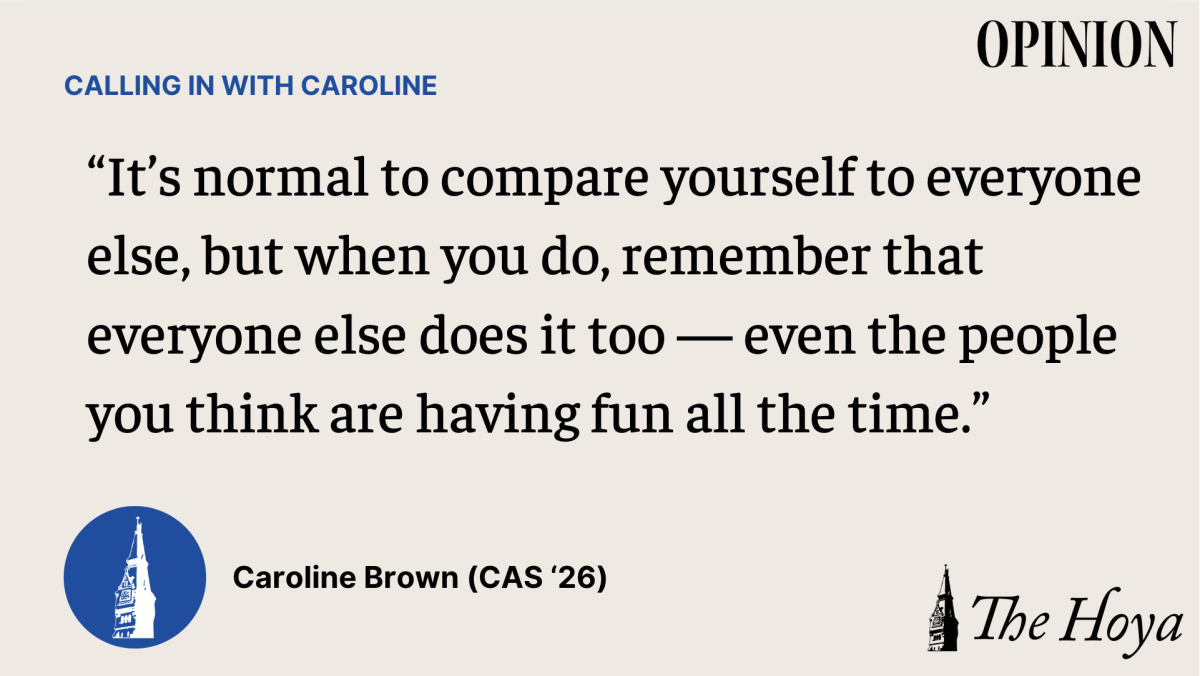
Josh • Sep 16, 2025 at 5:24 am
Great article. As a prior Vil A resident, I hope more students can rally around this issue.